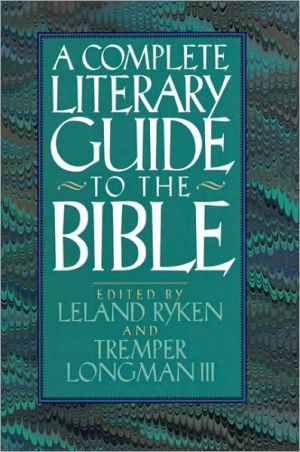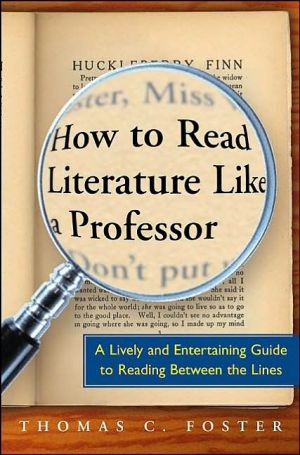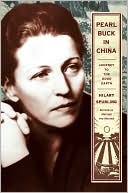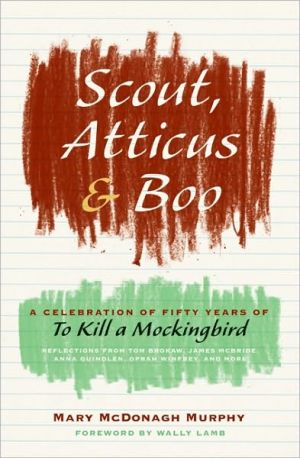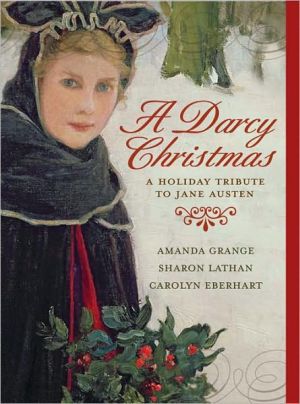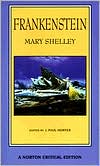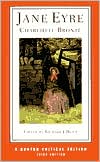Complete Literary Guide to the Bible
The Editors Leland Ryken Wheaton College (Illinois)\ Tremper Longman III Westminster Theological Seminary The Authors Fredrick Buechner Novelist John Sailhamer Trinity Evangelical Divinity School Wilson G. Baroody (deceased) Arizona State University William F. Gentrup Arizona State University Kenneth R.R. Gros Louis Indiana University Willard Van Antwerpen Indiana University Nancy Tischler The Pennsylvania State University V. Philips Long Covenant Theological Seminary Michael Hagan North...
Search in google:
The aim of Complete Literary Guide to the Bible, edited by Leland Ryken and Tremper Longman III is to insure consistency in method and scope with a view to integrating literary and biblical studies. The book has four parts: The Bible as Literature, The Literature of the Old Testament, the Literature of the New Testament, the Literary Influence of the Bible.BooknewsThe editors seek a consistency in method and scope in the integration of literary and biblical studies. Contributions, in equal number from biblical and literary scholars, develop original points while also dealing with issues of genre, unity, style, and the human experiences in their texts. Not included are issues of historicity of events, theories of authorship, and background material. Annotation c. Book News, Inc., Portland, OR (booknews.com)
The Complete Literary Guide to the Bible\ \ By Leland Ryken Tremper Longman III \ Zondervan\ Copyright © 1993 Zondervan\ All right reserved.\ ISBN: 0-310-23078-0 \ \ \ \ Chapter One\ Introduction \ Leland Ryken and Tremper Longman III Wheaton College Westminster Theological Seminary\ At a time when scholars and publishers are eager to claim that their approach to the Bible is literary, it has become a common practice to accept all claims as valid. As editors of this volume we have not taken this easy way out. To accept every piece of commentary as literary that claims to be such undermines the credibility of the very concept of a literary approach to the Bible. The purpose of this chapter is to define what we mean by a literary approach to the Bible, to identify differing emphases among literary critics and biblical scholars, and to provide an overview of some leading literary traits of the Bible.\ The Literary Study of the Bible\ Biblical scholars have been using the terms literature and literary criticism for at least half a century, but until recently they did not define these terms in the same way that literary scholars in the humanities did. Two decades ago Amos Wilder rightly recorded his "astonishment that the term 'literary criticism' should have such different connotations for biblical scholars as for students of literature generally," noting specifically the preoccupation of biblical scholars with authorship, sources, dating, and purpose as opposed to "those appreciative and interpretive questions which are the goal of criticism everywhere else" (Rhetoric xxii).\ Literary critics themselves have presented a splintered scene in recent years, and it is of course impossible to reduce the field to a single approach. Yet as one looks at the deep structure that underlies the amorphous thing called literary criticism in the last half century, it is apparent that the influence of traditional literary criticism remains a subtext for the new approaches that have succeeded each other with accelerating frequency. If we ask what most characterizes traditional literary criticism, the answer is that a concern with genre does, provided that we acknowledge that literature itself constitutes a genre with identifying traits (Fowler 1-19).\ To forestall potential resistance, we need to say at once that the Bible is a mixed book that contains three dominant types of material and therefore invites multiple approaches. The three main interests of biblical writers are the theological, the historical, and the literary. The focus of this book is on only one of these, which is not, however, offered as a complete approach. To say that a literary approach is limited in what it can do with a biblical text is to say nothing that cannot be said of any other approach.\ It is a truism that each scholarly generation creates its own critical vocabulary, yet certain principles have remained constant under the changing styles of criticism. One is that the subject of literature is human experience, concretely presented. The Classical tradition spoke of literature as an imitation of reality, whereas the Romantic tradition championed the idea that literature is an image of human experience. What both traditions have in common is an assumption that literature does not consist primarily of abstractly stated ideas but of truthfulness to human experience and life.\ When a writer comments that his book will "consider how the Bible, as literature, uses images in a great variety of ways" (Fischer 39), we do not need to inquire into the author's scholarly discipline before we know that the approach is literary. The authentic literary note is similarly sounded by the statement that the stories of the Bible "tell of mankind's experience at its most moving and most memorable in words that go beyond mere chronicle: words that strike the heart and light up the vision" (Roche xvi). Or, to take another specimen, a literary commentary on the gospel of Luke comments regarding the story of Jesus on the road to Emmaus that "a story is a story is a story. It cannot be boiled down to a meaning. Here the power is in suggestion rather than outright doctrine" (Drury 217). Contrariwise, a piece of scholarship that primarily discusses the ideas or historicity of a biblical text removes itself from what we mean by literary criticism.\ Literature enacts rather than states, shows rather than tells. Instead of giving abstract propositions about virtue or vice, for example, literature presents stories of good or evil characters in action. The commandment "you shall not murder" is propositional and direct, while the story of Cain and Abel embodies the same truth in the distinctly literary form of narrative-a narrative, we should note, that does not even use the word murder. When we read a literary text, we do not feel primarily that we have been given new information but rather that we have undergone an experience.\ Several corollaries follow from the incarnational nature of literature. One is that literature conveys its meanings by a certain indirectness and therefore calls for interpretation. Novelist Flannery O'Connor claimed that the storyteller speaks "with character and action, not about character and action" (76). About what, then, does the storyteller tell us by means of character and action? About life, human experience, reality, truth. Inherent in O'Connor's formula is the idea that the indirection of literature places a burden of interpretation on a reader. Literary texts do not come right out and state their themes. They embody them.\ This means, in addition, that literary texts are irreducible to propositional statements and single meanings. The whole story or the whole poem is the meaning. A propositional statement of theme can never be a substitute or even the appointed goal of experiencing a literary text. At most it is a lens through which we see the incarnated experiences-something that brings the experiences embodied in the text into focus.\ The chapters that follow will have a lot to say about the form in which the Bible comes to us and the relation of that form to ideology, but they will say relatively little about ideas per se. They will have more to say about the human experiences presented in the Bible than about theological ideas. A noted theologian has said that "we are far more image-making and image-using creatures than we usually think ourselves to be and ... are guided and formed by images in our minds," adding that the human race "grasps and shapes reality ... with the aid of great images, metaphors, and analogies" (Niebuhr 151-52, 161). The essays in this volume share this literary bias and believe that the Bible confirms it.\ With a literary text, form is meaning. This implies that we cannot grasp the truth of story or poem, for example, without first interacting with the story qualities or poetic images. We cannot understand the religious and human themes of the story of Abraham's offering of Isaac without first reliving the progress of this test story and analyzing the characterization of Abraham and God in the story. The sheep-shepherd metaphor that pervades Psalm 23 itself embodies the truth of the poem. The literary critic's preoccupation with the forms of biblical literature is more than an aesthetic delight in craftsmanship, though it is not less than that. It is also part of a concern to understand the truth of the text at a deeper level than a propositional summary extracted from the text.\ A second identifying trait of literature is its self-conscious artistry. Literature is more saturated with technique and pattern than ordinary writing is. The proportion of commentary devoted to matters of how something is expressed is proportionately higher with a literary text than with an expository text. Literature calls attention to its own technique in a way that ordinary discourse does not. We can legitimately speak of literary writers' exploiting and even flaunting their verbal and artistic resources. Whereas ordinary discourse is most effective when it is most transparent, pointing efficiently and unambiguously to a body of information, literary writing continually asks us to interact with the "how" of the utterance.\ Given the range of contemporary literary approaches, the interest that contributors to this volume show in literary form does not mean just one thing. To some it means an aesthetic interest in artistic form-the delight in something carefully crafted and intricately patterned. To others it is part of a rhetorical interest in how discourse is structured to achieve its effects. Structuralist analysis maintains a strong appeal to biblical scholars who associate certain verbal structures such as repetition and chiasm with the distinctiveness of the Bible. Narratology has its own preoccupation with technique, pattern, and conventions. Robert Alter's theory of type scenes that carry expectations for both author and reader has elicited the loyalty of many biblical scholars. Underlying the range of current critical approaches, however, is a shared conviction that literature is the result of conscious composition, careful patterning, and an awareness of literary conventions prevalent at the time of writing and subsequently.\ (Continues...)\ \ \ \ \ Excerpted from The Complete Literary Guide to the Bible by Leland Ryken Tremper Longman III Copyright © 1993 by Zondervan. Excerpted by permission.\ All rights reserved. No part of this excerpt may be reproduced or reprinted without permission in writing from the publisher.\ Excerpts are provided by Dial-A-Book Inc. solely for the personal use of visitors to this web site. \ \
Acknowledgments7Preface91Introduction152The Bible as Literature403The Bible as Literature: A Brief History494Biblical Narrative695Biblical Poetry806The Literature of the Old Testament957Genesis1088Exodus, Leviticus, Numbers, and Deuteronomy1219Joshua and Judges13710Ruth15111First and Second Samuel16512First and Second Kings18213First and Second Chronicles19314Ezra - Nehemiah20615Esther21616Job23017Psalms24518Proverbs25619Ecclesiastes26820Song of Songs28121Old Testament Prophecy29622Isaiah31023Daniel32424Amos33725Jonah34826The Literature of the New Testament36127Matthew37628Mark38729Luke39830John40931The Parables42232Acts43633The Epistles44534Revelation45835The Literary Influence of the Bible47336The Novelist and the Bible48937The Bible Through a Poet's Eyes49938The Value of a Literary Approach for Preaching509Indexes520
\ BooknewsThe editors seek a consistency in method and scope in the integration of literary and biblical studies. Contributions, in equal number from biblical and literary scholars, develop original points while also dealing with issues of genre, unity, style, and the human experiences in their texts. Not included are issues of historicity of events, theories of authorship, and background material. Annotation c. Book News, Inc., Portland, OR (booknews.com)\ \
